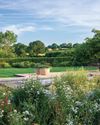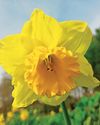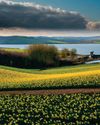
TODAY sees the launch onto the market for the first time in 101 years of the historic 1,763-acre Glemham Hall estate. On the outskirts of Little Glemham, it is seven miles from Aldeburgh on Suffolk's magical heritage coast, eight miles from Woodbridge and 14 miles from the county town of Ipswich. Tim Fagan of Strutt & Parker (01473 220449) quotes a guide price of $19 million for the estate with its Grade I-listed mansion house set in some 200 acres of formal gardens and parkland with frontage to the River Alde, in-hand and let farms, a farmhouse and cottages, which is offered either as a whole or in its constituent parts.
Although the Glemham family of east Suffolk were already established as landowners in the area from the early 15th century, they didn't acquire Little Glemham until the Dissolution of the Monasteries in the 1540s. According to The History of Parliament (1604-29), Thomas Glemham of Glemham Hall substantially enlarged the estate by purchasing former monastic lands, thereby turning the family into important east Suffolk landowners.
An article in COUNTRY LIFE (January 1, 1910) attributes the building of 'this delightful sample of our Early Renaissance style' to Thomas's son, Sir Henry Glemham, who married a daughter of Thomas Sackville, Earl of Dorset and Lord High Treasurer, thanks to whose patronage Sir Henry became the first member of his family to sit in Parliament.
He died at Little Glemham in 1632 and was succeeded by his son, Sir Thomas, a career soldier who was described on his death in 1648 as a gentleman of noble extraction and a fair but impaired fortune', which resulted in the eventual sale of Glemham to the North family, later Earls of Guilford, in 1708.
This story is from the {{IssueName}} edition of {{MagazineName}}.
Start your 7-day Magzter GOLD free trial to access thousands of curated premium stories, and 9,000+ magazines and newspapers.
Already a subscriber ? Sign In
This story is from the {{IssueName}} edition of {{MagazineName}}.
Start your 7-day Magzter GOLD free trial to access thousands of curated premium stories, and 9,000+ magazines and newspapers.
Already a subscriber? Sign In

Shaping the view
Shaping the view The Cart House, near Boddington, Northamptonshire A Modernist garden was exactly the right choice for this newly converted agricultural building

Snakes and snails and puppy-dog tales
Two kindred spirits made it their lives’ work to collect the smallest great poems of the world’s literature’, preserving for children the nursery rhymes, games and fairy tales no longer handed down by their mothers

The ghost of golden daffodils
The flower remains the national emblem of Wales, but how many today are aware of the true Welsh or Tenby daffodil

Kentish variety
Renovations, showjumping and archbishops lend character to two period properties

History triumphs over invention.
A brilliantly acted historical play about two world leaders squaring up to each other outstrips two over-produced versions of Greek mythology, despite their imported Hollywood stars

The lure of Venice
Vedute, the kaleidoscopic views of the maritime republic made popular by Canaletto, so enchanted the British that they not only collected them in large numbers, but soon began painting their own shimmering visions of the city

Power games and the battle for beauty
The Government’s plan to cover the countryside in ugly pylons with seemingly no regard for aesthetics must be vigorously challenged

Mad as a box of frogs
With genes that bear an uncanny resemblance to our own, our amphibious frog friends have aided medical advances and captivated many cultures with their mystical powers, discovers Ian Morton

Follow the yellow brick road
\"IN the 100th year since the death of the man who saved the daffodil I from extinction, the RHS hopes to safeguard the bulb from the perils of a changing climate.

Picasso's mystery lady
A MYSTERIOUS woman has been discovered A under underneath Picasso's Portrait of Mateu Fernández de Soto (1901).